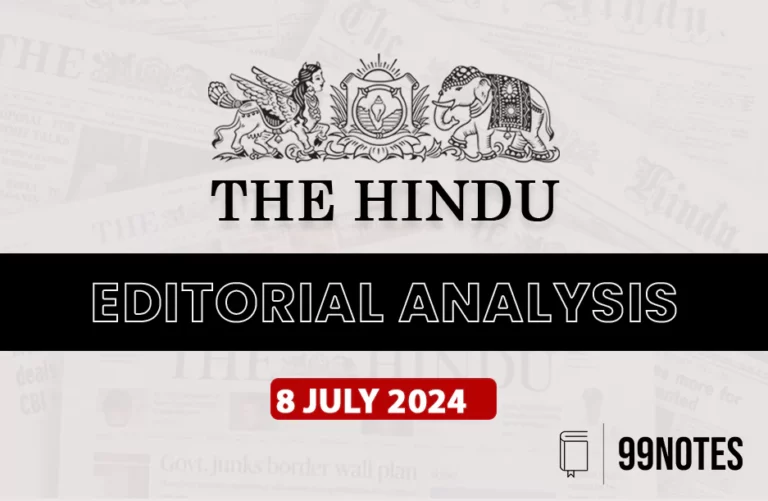17 April 2025 : Indian Express Editorial Analysis
1. Fiction of balanced trade
(Source – Indian Express, Section – The Editorial Page – Page No. – 12)
|
Topic: GS2 – International Relations, GS3 – Indian Economy |
|
Context |
|
The United States and the Escalating Tariff War
- The United States, under President Donald Trump’s administration, is now fully entrenched in a global tariff war.
- Despite a temporary 90-day halt on some country-specific tariffs, significant duties including a 10% universal import tariff and targeted 25% tariffs on autos, steel, and aluminium remain active.
- These protectionist measures have provoked strong retaliatory actions, particularly from China, leading to a near-complete breakdown in trade relations between the two economic giants.
- The conflict marks a significant shift from multilateral trade cooperation to aggressive bilateralism.
Global Financial Turbulence and Recession Fears
- Financial markets around the world have reacted with volatility to the ongoing tariff uncertainties.
- Despite the moratorium announcement, investor confidence has continued to waver, largely due to unpredictability and rising costs in global supply chains.
- As businesses face shrinking profit margins and are forced to adapt to new trade realities, fears of a global recession have intensified.
- The unpredictability in trade policy has become a significant risk factor affecting investment and economic growth worldwide.
Bond Market Stress Signals Deeper Economic Trouble
- A worrying trend is emerging in the US bond markets, where long-term yields are beginning to rise unexpectedly.
- Normally, in times of equity market volatility, investors shift to bonds, pushing prices up and yields down.
- However, simultaneous declines in stock prices and bond yields suggest that foreign investors are pulling out of US assets altogether—a sign of waning global confidence in the US economy.
- This bond market instability may have influenced Trump’s decision to pause certain tariffs, indicating that financial market pressure is beginning to shape policy decisions.
Complex Motivations Behind US Tariff Strategy
- The underlying goal of the Trump administration’s tariff strategy appears to be achieving balanced bilateral trade, where the value of exports and imports with each partner are roughly equal.
- This approach deviates from traditional economic thinking, which recognizes trade deficits as outcomes of broader macroeconomic factors like savings-investment gaps or fiscal policies.
- The rejection of the EU’s proposal to mutually eliminate tariffs reveals that the US is not aiming for reciprocity but rather numerical trade parity.
- However, this target is economically simplistic and ignores the structural reasons for persistent trade imbalances.
Trade Deficits as Economic Realities, Not Failures
- Trade deficits are not inherently problematic and can reflect positive developments such as strong domestic investment or accommodative monetary policy.
- They are essentially financed either through export revenues or asset sales to foreign investors.
- The analogy to household or business borrowing underscores the point that deficits can be a rational economic choice.
- The US’s aggressive stance, which treats trade deficits as failures rather than financial flows, reflects a misunderstanding of international economics and asset trade dynamics.
Implications for India: Risks and Opportunities
- India faces a dual challenge from the evolving trade environment. On the downside, a potential global recession threatens Indian export growth, while the flood of cheaper Chinese goods diverted from the US market could undercut domestic manufacturers.
- However, there are silver linings. Lower global prices may ease inflation in India, providing space for more supportive monetary policies.
- Additionally, as global companies rethink supply chains, India could attract new manufacturing investment, especially in electronics and consumer goods, if it leverages its labor advantage effectively.
Strategic Trade Negotiations and Policy Adjustments
- India must prioritize a comprehensive trade deal with the US, one that not only lowers tariffs but also addresses America’s demand for balanced trade.
- Protecting India’s robust service exports, especially in IT and consulting, will be critical.
- If needed, India may have to commit to increasing imports from the US particularly in areas like energy or defense to satisfy bilateral trade concerns.
- Simultaneously, India can use US demands for agricultural access to justify overdue reforms in its agricultural sector, improving productivity and market integration.
Broadening Trade Engagements and Domestic Reform
- India should accelerate its outreach to other trade blocs such as the EU, ASEAN, and CPTPP, and reinvigorate bilateral and multilateral trade agreements.
- Diversifying trade partnerships can shield the economy from US-centric volatility.
- Moreover, it is an opportune moment for India to reduce its own tariff barriers, which have crept upward in recent years.
- Greater exposure to global competition can catalyze domestic industry modernization and global competitiveness, aligning with long-term growth objectives.
Conclusion:
- The global trade upheaval triggered by US protectionism offers India a rare window to implement deep economic reforms.
- Policymakers must respond with agility and foresight, embracing trade liberalization and structural reforms that can reposition India as a central node in global supply chains.
- Historically, crises have often driven transformative policy shifts, and if India plays its cards wisely, it could emerge stronger and more competitive in the new global economic order.
|
Practice Question: The recent tariff war initiated by the United States has exposed the vulnerabilities of the global trading system and created both challenges and opportunities for emerging economies like India.” Critically examine. (250 Words /15 marks) |
Read more – 16 April 2025 : Indian Express Editorial Analysis

